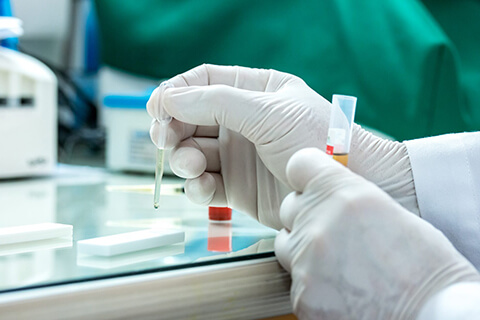Numerous organizations, athletic programs, and legal circumstances routinely conduct drug test marietta ga on their employees. Organizations opt for drug testing because they are concerned about the safety of their workplace, liability, and the perception of members of the public.
Because your work, eligibility for sports, or legal status is contingent on your ability to pass a drug test, you must have a thorough understanding of the criteria that are used in these tests.
Which Drugs Are Tested For?
Employment and legal drug test screen for the most commonly abused substances:
- Marijuana – THC metabolites can be detected in urine for days or weeks after use. On both the federal and state levels, marijuana is outlawed. CBD products may also trigger positive tests.
- Cocaine – Cocaine and metabolites exit urine quickly but may be detected for 2-3 days after use.
- Opiates – Opioid pain relievers like morphine, oxycodone, and heroin are tested. These drugs clear rapidly from urine but linger longer in hair tests.
- Amphetamines/methamphetamines – Amphetamines can only be detected for a brief period of one to two days. When used often, methamphetamine can be detected for 1-3 weeks.
- PCP – The hallucinogen PCP can be identified in urine for up to a week or longer with heavy use.
- MDMA – Ecstasy and Molly containing MDMA have a very short urine detection time of just 1-3 days.
- Alcohol – Alcohol leaves the body quickly and is not typically included in a drug test. Breathalyzers detect very recent alcohol intake.
What Methods do Laboratories Use?
Urine, blood, hair, Saliva Samples, and sweat can be tested for evidence of drug intake. Urine screening is most common because:
- The collection is non-invasive. Proper precautions prevent tampering.
- A large detection window makes it ideal for a workplace drug test.
- Numerous substances and metabolites are excreted into urine and detectable for 1-4 days or longer after use.
Gas chromatography and mass spectrometry are reliable drug test methods laboratories utilize to isolate and identify chemicals indicative of specific recreational or illegal drugs.
How Long Do Drugs Stay Detectable?
Detection windows vary widely by substance. Factors like the drug itself, usage frequency, dosage, and individual metabolism affect the time a drug remains detectable.
- Marijuana – 30 days for casual usage and 90 days for chronic use.
- Amphetamines – 1-2 days
- Cocaine – 2-3 days
- Opioids – 1-4 days
- PCP – up to 14 days
- MDMA – 1-3 days
- LSD – very short detection times
A hair follicle test can detect most drugs for months or even years after the last usage. Hair analysis gives a longer history of drug exposure.
Get Accurate & Fast Results When You Opt For Drug Testing with Rapid Labs
Understanding what a drug test screens for and the detection windows for each substance helps you make wise choices. For some, abstaining for 30-90 days may be necessary to pass urine, blood, or hair testing. Be aware – detox kits and adulterants are often caught and can be considered obstruction of testing.
Don’t risk your future. Visit Rapid Lab Tests and schedule testing to know if you will pass before your important drug test. When it comes to collecting samples, we ensure that everything is up to the level of comfort. Throughout the entire process of administering a drug test, we prioritize ease and perfection in everything that we can possibly do.
FAQs
What is the most common drug test method?
Urine drug screening is most frequently used for employment, legal, and medical testing. Urine provides a decently long detection window for commonly abused substances.
What does a standard 5-panel drug test check for?
A standard 5-panel urine screen tests for marijuana, cocaine, amphetamines/methamphetamines, opiates, and PCP. Extended opiate panels also test for semi-synthetic opioids like oxycodone and hydrocodone.
How far back can a hair follicle drug test detect use?
Most hair tests detect substance use for months or even years back, up to the length of your hair sample. Body hair can provide an even longer history. Head hair typically provides a 90-day window.
Can you cheat on a urine drug test?
Adulterating, substituting, or tampering with your urine sample may be detected. These attempts may be considered obstruction of testing. Your best option is to abstain from drug use for as long as possible before testing.
What should you do if you suspect your test result was a false positive?
Discuss with your employer or testing organization about having your urine sample retested at the laboratory using more rigorous confirmation testing methods. This should determine if the results were inaccurate.

